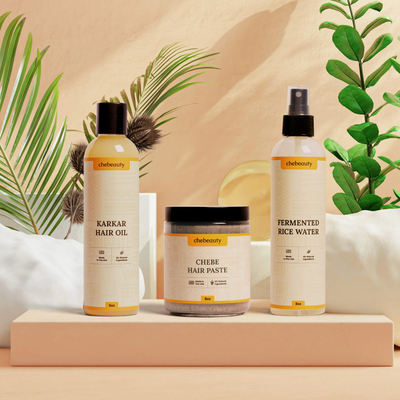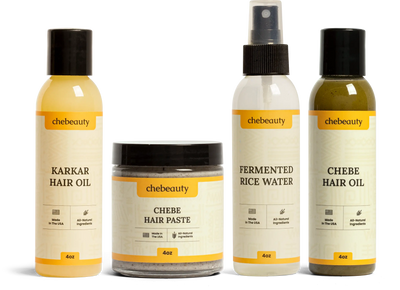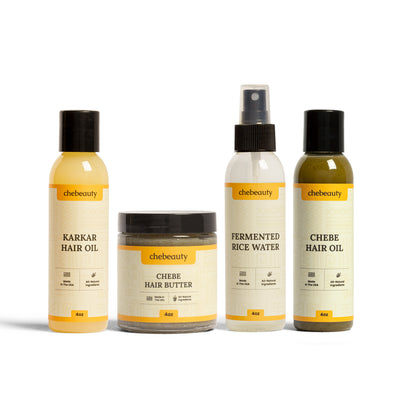Curly hair though without a doubt beautiful comes with its own set of challenges. Among them, split ends can be a persistent issue, causing frustration and compromising the health of your curls. In this guide, we'll explore the ins and outs of managing split ends in curly hair, offering prevention strategies, treatment options, and styling tips to help you maintain vibrant and healthy locks.
Brief Explanation of Split Ends in Curly Hair
Split ends, also known as trichoptilosis, occur when the hair shaft splits or frays at the tip. In the context of curly hair, where the spiral structure can make it more susceptible to damage, split ends are especially common. They can arise from various factors such as mechanical damage caused by brushing, heat styling, or environmental stressors like sun exposure and harsh weather conditions.
Identifying split ends in curly hair may require closer inspection due to the coil pattern, but common signs include uneven or wispy ends, rough texture along the hair length, and increased tangling and breakage. Understanding the nature of split ends is crucial for effective management and maintaining the health and vibrancy of your curls, which is why we’ll delve into all the details further.
Importance of Managing Split Ends for Healthy Curls
Effective management of split ends is crucial for maintaining the overall health and vitality of curly hair. Split ends not only detract from the appearance of your curls, but they can also lead to further damage if left untreated. When split ends are present, they weaken the hair shaft, making it more prone to breakage and hindering the length retention of your curls.
By actively managing split ends through prevention, treatment, and proper styling techniques, you can preserve the integrity of your curls, promote healthy growth, and achieve the vibrant, luscious locks you desire. Prioritizing split end management is not just about aesthetics—it's a crucial step in nurturing and maintaining your curly hair’s overall health.
Overview of What the Blog Post Will Cover
In this comprehensive guide, we'll explore the multifaceted world of managing split ends in curly hair. We'll begin by providing a brief explanation of split ends in curly hair, detailing their causes and characteristics. Next, we'll delve into the importance of managing split ends for healthy curls, emphasizing the significance of prevention and treatment. We'll then discuss various prevention strategies tailored specifically for curly hair, including proper haircare routines, protective styling options, and the importance of regular trims.
Following that, we'll explore temporary fixes for styling purposes and delve into treatment options for addressing existing split ends. Additionally, we'll provide styling tips designed to minimize damage and preserve the health of your curls. Finally, we'll discuss the importance of maintaining overall hair health and nutrition to prevent future split ends and promote vibrant, resilient curls. Through this comprehensive exploration, you'll gain valuable insights and practical techniques for effectively managing split ends and nurturing the beauty of your curly hair.
Understanding Split Ends in Curly Hair
Definition of split ends
Split ends are like unwelcome guests at a party – they show up uninvited and destroy the mood. While seemingly small, the nuisance they create can have a significant impact on the overall health and appearance of your curls. They occur when the protective outer layer of the hair, known as the cuticle, becomes damaged or wears away, leaving the inner layers vulnerable to splitting or fraying. In curly hair, where the natural oils produced by the scalp struggle to navigate the twists and turns of the spiral strands, split ends can be especially prevalent and challenging to manage.
The structure of curly hair itself predisposes it to split ends. Each coil and kink creates points of weakness along the hair shaft, making it more susceptible to damage from external factors such as friction, heat, and environmental stressors. Additionally, the curvature of curly hair makes it harder for the scalp's natural oils to coat the entire length of the strands, leaving the ends more prone to dryness and brittleness.
As a result, split ends in curly hair often manifest as unruly frizz, uneven texture, and increased tangling and breakage. These visual cues serve as reminders of the importance of diligent haircare and maintenance to prevent and manage split ends effectively. Understanding the underlying causes and characteristics of split ends is the first step towards reclaiming the health and vitality of your curls.
Causes of split ends in curly hair
Understanding the root causes of split ends in curly hair is essential for devising effective management strategies. Several factors can contribute to the development of split ends, each playing a role in compromising the integrity of your curls.
Excessive Heat Styling: Curling irons, flat irons, and blow dryers can be both a blessing and a curse for curly hair. While they can help achieve desired styles, excessive heat exposure can wreak havoc on the hair shaft, causing it to become brittle and prone to splitting. The high temperatures strip away moisture from the strands, leaving them dry and susceptible to breakage.
Rough Handling During Detangling: Curly hair, with its intricate coils and twists, requires gentle care when detangling to avoid damage. Rough handling, such as aggressive brushing or combing, can lead to hair breakage and the formation of split ends. Opt for a wide-tooth comb or your fingers to gently work through knots and tangles, starting from the ends and working your way up to the roots.
Overwashing with Harsh Shampoos: While cleansing your hair is essential for maintaining scalp health, overwashing with harsh shampoos can strip away the natural oils that protect and nourish your curls. Tryt to opt for shampoos with natural ingredients that are gentle on your curls while effectively cleansing your scalp.
Environmental Stressors: External factors such as sun exposure, humidity, and pollution can also take a toll on curly hair, contributing to the development of split ends. UV rays from the sun can weaken the hair shaft and cause it to become brittle over time, while humidity can lead to frizz and increased tangling. Additionally, pollutants in the air can deposit onto the hair, weighing it down and making it more prone to breakage.
By being mindful of these potential causes of split ends and taking proactive steps to minimize their impact, you can help safeguard the health and vitality of your curly locks. From adopting gentle haircare practices to protecting your curls from environmental stressors, every effort you make towards preventing split ends contributes to the overall well-being of your hair.
Characteristics of split ends in curly hair
Sometimes spotting split ends amidst the twists and turns of curly hair requires a keen eye and attention to detail. While the coil pattern of curly hair can sometimes camouflage damage, there are several subtle yet telltale signs that anyone can observe.
Uneven Texture: Split ends often result in an uneven texture along the length of the hair shaft. Instead of the smooth, uniform appearance of healthy hair, split ends may appear frayed or jagged, with individual strands sticking out in different directions. Run your fingers along the length of your hair to feel for any rough or irregular areas, particularly towards the ends.
Increased Tangling: As split ends progress, they can lead to increased tangling and matting of the hair. The damaged ends catch onto neighboring strands more easily, resulting in knots and tangles that are stubborn and difficult to untangle. Pay attention to any areas of your hair that seem particularly prone to tangling, as this may indicate the presence of split ends.
Increased Breakage: Split ends weaken the hair shaft, making it more prone to breakage and shedding. If you notice an increase in hair breakage, particularly towards the ends, it may be a sign that split ends are present. Keep an eye out for small, broken pieces of hair that accumulate on your clothes, pillowcase, or hairbrush.
Prevention of Split Ends in Curly Hair
Beyond split end management, maintaining healthy curls requires a holistic approach. Establishing a consistent haircare routine that includes regular deep conditioning treatments and protective styling practices is essential. Additionally, prioritize overall health and nutrition, as the condition of your hair often reflects your internal well-being. Stay hydrated, eat a balanced diet rich in vitamins and minerals, and indulge in self-care practices to promote both physical and emotional well-being.
Best haircare routine for curly hair
Cleansing
- Use a natural-ingredient based shampoo (e.g. Chebe Shampoo) designed specifically for curly hair to gently cleanse the scalp and remove buildup without stripping away natural oils
- Focus on massaging the scalp to promote circulation and stimulate hair growth while minimizing disruption to the natural curl pattern.
Conditioning
- Follow shampooing with a moisturizing conditioner such as Chebe Leave-In Conditioner, applying it generously from mid-length to ends to replenish moisture and enhance curl definition.
- Detangle curls gently using a wide-tooth comb or fingers while the conditioner is still in the hair to prevent breakage and minimize split ends.
Regular Trims
- Schedule regular trims every 8-12 weeks to remove split ends and maintain the shape of curls, promoting healthy growth and preventing further damage.
Heat Styling
- As tempting as it may be to experiment with your hair, try to minimize heat styling to prevent damage, and
- Always use heat protectant products when necessary to shield curls from excessive heat exposure.
Detangling with Care
- Detangle your curls gently using a wide-tooth comb or your fingers while the conditioner is still in your hair to minimize breakage and prevent further damage.
Protective Styling
- Embrace protective styling options such as braids or twists to minimize manipulation and reduce the risk of breakage, particularly during sleep or physical activities.
Hydrating Treatments
- Incorporate natural treatments or hair butters into your routine once or twice a week to provide extra hydration and repair damage.
Nighttime Care
- Invest in a satin or silk pillowcase or use a satin hair bonnet or scarf to protect your curls while you sleep, minimizing friction and preventing breakage.
Protective styling options
Braids: Braiding curly hair helps keep strands tucked away and protected from environmental stressors, reducing the risk of split ends while promoting moisture retention and preventing tangling.
Twists: Similar to braids, twists provide a protective barrier for curly hair, minimizing manipulation and exposure to damage-causing elements. They also offer versatility and can be styled in various ways to suit different preferences.
Buns: Styling hair into a bun keeps it neatly gathered and shielded from friction and breakage, particularly at the ends where split ends tend to occur. Buns are an elegant and practical protective style for curly hair.
Updos: Updos, such as ponytails or top knots, offer an easy and effective way to protect curly hair while keeping it off the shoulders and back. They help maintain moisture levels and reduce the risk of split ends caused by friction and rubbing against clothing.
Importance of regular trims and haircuts
Regular trims and haircuts are essential for removing split ends and promoting healthy growth.
Prevention of Split Ends: Regular trims every 8-12 weeks help prevent split ends from worsening and traveling up the hair shaft, preserving the overall health of curly hair.
Promotion of Hair Growth: By removing damaged ends, regular trims encourage healthy hair growth, allowing curls to flourish and maintain their natural vitality.
Enhancement of Curl Definition: Tailored haircuts for curly hair can shape and define curls, enhancing their natural texture and promoting a more uniform and polished appearance.
Minimization of Breakage: Removing split ends reduces the risk of breakage and tangling, helping to maintain the strength and integrity of curly hair strands.
Overall Hair Health: Investing in regular trims and haircuts is essential for the long-term health and beauty of curly hair, ensuring that it remains strong, vibrant, and free from split ends.
Treatment Options for Split Ends in Curly Hair
While prevention is key, sometimes split ends still manage to sneak their way into your curls. In such cases, temporary fixes for styling purposes can help disguise split ends until your next trim. Techniques such as twisting or braiding can help conceal split ends, but since we are looking for a long-term solution products that can really change our curly hair for the best.
Hair Butters & Hair Pastes: When combating split ends in curly hair, incorporating hair butters and hair pastes can be highly beneficial. For those who prefer thicker textures, opting for options like Chebe Hair Paste is ideal. This paste provides deep moisturization and sealing properties, helping to lock in moisture and prevent further damage along the hair shaft. Its thick consistency works well for individuals with denser curls, offering intense hydration and protection against environmental stressors.
On the other hand, for those with finer curls, Chebe Hair Butter might be a better choice due to its lighter texture. This butter still provides essential moisture and sealing benefits but without weighing down delicate strands, promoting healthier hair overall.
Hair Oils: Another effective treatment option for split ends in curly hair is the use of hair oils. Chebe Hair Oil is an excellent choice for those looking to strengthen the length of their curls. Packed with nourishing ingredients, this oil deeply penetrates the hair shaft, providing essential nutrients and fortifying strands against breakage.
Conversely, if scalp health is a concern, Karkar Oil offers targeted benefits. This oil focuses on nourishing the scalp, promoting circulation, and maintaining a healthy environment for hair growth. By addressing scalp issues, Karkar Oil indirectly supports the prevention of split ends by fostering stronger, healthier hair from the roots.
Rice Water: Incorporating rice water into a hair care routine can also be highly effective in preventing split ends, especially for curly hair types. Rice water is rich in proteins and amino acids, which are essential for strengthening hair strands and promoting overall hair health. As a protein treatment, rice water helps to fortify the hair cuticle, reducing the risk of breakage and split ends.
Regular use of rice water can enhance the resilience of curly hair, making it less prone to damage and improving its ability to retain length. Whether used as a rinse or a treatment mask, incorporating rice water into a hair care regimen can yield noticeable benefits for preventing split ends in curly hair.
Styling Tips for Managing Split Ends in Curly Hair
Gentle styling techniques
Finger Detangling: Use your fingers to gently work through knots and tangles, starting from the ends and working your way up to the roots.
Wide-Tooth Comb: Use a wide-tooth comb to detangle curly hair, minimizing breakage and reducing the risk of split ends.
Avoid Dry Brushing: Brushing curly hair when it's dry can lead to breakage and frizz. Instead, style your curls when they are damp or wet using a leave-in conditioner or styling cream to provide slip and reduce friction.
Low-Manipulation Hairstyles: Embrace hairstyles such as loose braids, buns, or twists to minimize stress on the hair and maintain its natural curl pattern.
Protective Styling: Incorporate protective styling options to shield your curls from damage and reduce the need for excessive manipulation.
Choosing hair products wisely
Hair products are an important part of maintaining and boosting your hair health.
Curly Hair-Specific Products: Choose products specifically formulated for curly hair types, as they are designed to provide the moisture and nourishment that curls need to thrive.
Gentle Shampoos: Opt for shampoos that cleanse the hair gently without stripping away its natural oils, helping to maintain moisture levels and prevent dryness.
Leave-In Conditioners: Incorporate leave-in conditioners into your routine to provide added hydration and protection against environmental stressors, helping to keep curls healthy and resilient.
Avoid Harsh Chemicals: Steer clear of products containing harsh chemicals or alcohol, as these can dry out the hair and contribute to damage and breakage.
Natural Ingredients: Choose products that contain natural, nourishing ingredients such as shea butter, coconut oil, and argan oil, which help to moisturize and strengthen curly hair from within.
Heat styling alternatives
Consider alternatives to heat styling, such as air-drying or using diffusers on low heat settings, to minimize damage and preserve the health of your curls.
Air-Drying: Allow your hair to air dry naturally without the use of heat styling tools, embracing your curls' natural texture and minimizing damage.
Diffuser Attachment: Use a diffuser attachment on a low-heat setting to gently dry your curls, enhancing their shape and reducing frizz without subjecting them to high temperatures.
Twist-Outs and Braid-Outs: Create defined curls and waves by styling your hair into twists or braids and allowing them to set overnight before unraveling them the next day.
Wet-Setting Techniques: Experiment with wet-setting techniques such as pin curls or flexi-rods to create stunning curls and waves without exposing your hair to heat, preserving its health and vitality.
Importance of Overall Health and Nutrition
Maintaining healthy curls extends beyond external haircare routines; it also involves prioritizing overall health and nutrition. Below are some of the factors that can have additional impact on your curly hair’s overall health and split ends in particular.
Overall Health
Stress Management: High stress levels can contribute to hair loss and damage. Incorporate stress-reducing activities such as yoga, meditation, or regular exercise into your routine to promote overall well-being and support healthy hair growth.
Adequate Sleep: Getting enough sleep is essential for your body to repair and regenerate, including your hair. Aim for 7-9 hours of quality sleep each night to support optimal hair health.
Hydration: Dehydration can lead to dry, brittle hair prone to breakage and split ends. Drink plenty of water throughout the day to keep your body and hair adequately hydrated.
Nutrition
Protein-Rich Diet: Hair is primarily made of protein, so consuming an adequate amount of protein-rich foods such as lean meats, fish, eggs, legumes, and nuts can support healthy hair growth and strength.
Vitamins and Minerals: Ensure your diet includes essential vitamins and minerals for hair health, such as vitamin E, vitamin C, biotin, and zinc. Incorporate a variety of fruits, vegetables, whole grains, and nuts into your meals to provide your body with the nutrients it needs.
Omega-3 Fatty Acids: Omega-3 fatty acids found in fatty fish, flaxseeds, chia seeds, and walnuts help nourish the scalp and support healthy hair growth from within.
By prioritizing overall health and nutrition, you provide your body with the foundation it needs to maintain vibrant, resilient curls and minimize the risk of split ends and other hair concerns.
Conclusion
Now that we’ve covered an impressive amount of information on dealing with split ends in curly hair, let’s sum up some of the key points to keep in mind.
- Understanding Split Ends: Recognizing the causes and characteristics of split ends is paramount for effective management, serving as the foundation for implementing preventative measures and treatment strategies tailored to curly hair's unique needs.
- Importance of Consistent Haircare: Establishing a consistent haircare routine specifically designed for curly hair is essential for maintaining its health and vitality. This includes gentle cleansing, moisturizing conditioning, and regular trims to prevent split ends from worsening and promote healthy growth.
- Gentle Styling Techniques and Alternatives: Embracing gentle styling techniques, such as finger detangling and low-manipulation hairstyles, helps minimize damage and reduce the risk of split ends. Heat styling alternatives offer a safer approach to styling without subjecting the hair to damaging high temperatures.
- Choosing Hair Products Wisely: Selecting hair products formulated for curly hair types, focusing on natural ingredients and avoiding harsh chemicals and alcohol helps keep curls moisturized and resilient, reducing the likelihood of split ends and promoting overall hair health.
- Prioritizing Regular Trims and Haircuts: Scheduling regular trims every 8-12 weeks is crucial for removing split ends and maintaining the shape of curls, while haircuts tailored for curly hair enhance curl definition and promote a polished appearance.
By integrating these strategies into your haircare routine and prioritizing the health of your curls, you can effectively manage split ends and enjoy vibrant, resilient hair that radiates beauty and vitality.

























